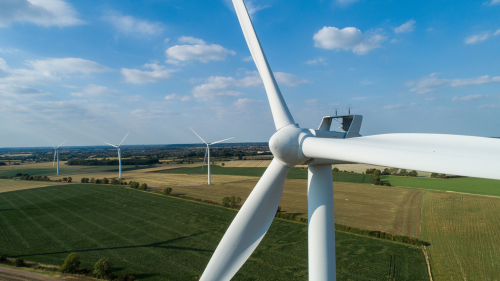
The Government has just issued a 10-point plan for a 'green industrial revolution', which will aim to help tackle climate change by getting the UK to net zero carbon emissions by 2050.
The 2030 ban on internal combustion engine vehicle sales in the plan is clearly a positive step, but collaboration between industry, government and DNOs will be vital to make it work.
The extension of the Green Homes Grant was a useful response, but there is much work to be done to enable a skilled and trained workforce that can deliver results. Meanwhile, we look forward to more detail on how the 10 point plan will be achieved, in addition to the release of the energy white paper and the next iteration of the Building Regulations and the Future Homes Standard, both of which will be key to future carbon reductions.
Industry vs climate change
Evidence shows we have little time to usefully mitigate the increasing effects of global warming. ECA is heavily focused on supporting the electrotechnical and wider engineering services industry in delivering the technologies and skills needed to help meet the UK Net Zero Carbon 2050 targets - and to deliver them as soon as possible.To this end, ECA and partners have been looking for significant improvements in policy and fiscal support for clean energy and energy efficiency measures, enabling us to ‘build back’ better and deliver lower carbon economic recovery. ECA has launched a new series of video shorts, under the banner of Get Zero Carbon Done, which highlight several key areas where our sector can contribute significantly to further UK decarbonisation, and which will also need major upskilling - watch them now at www.eca.co.uk/getzerocarbondone.
Tools for success
ECA, working with Government and industry stakeholders, will be looking for the adoption at scale of low to no carbon energy systems and energy efficiency measures. This need to include the delivery and installation of:
- Solar Photovoltaic (PV)
- Electrical Energy Storage Systems (EESS)
- Heat pumps (air-sourced, ground-sourced, water sourced and air to air)
- Direct electrification of heating (Infra-red, under-floor heating, storage-heating)
- Wind turbines
- Hydropower
- Energy efficiency measures
- Smart building controls
- Electrification of transport.
Skills for the future
We must ensure that low carbon installation is carried out by a suitably trained and competent workforce. This means practically useful and properly scoped training for new entrants, notably in the form of apprenticeships, but also for the very much larger cohort of existing installers who also need to upskill for the low-carbon economy.
In order for Net Zero Carbon 2050 to be achievable, full support and commitment for the necessary skills is needed by both Government and industry. Long term market confidence and policy direction is also vital to give companies surety and enable them to invest in their workforce.
There has never been a more exciting time to be a part of the UK electrotechnical industry, nor a time that requires such urgency for the skills, products and systems that our sector can deliver.
www.eca.co.uk/getzerocarbondone
